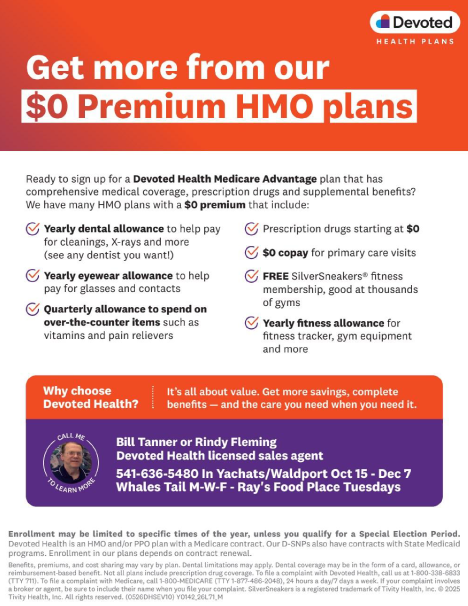By DIRK VANDERHART/Oregon Public Broadcasting
SALEM — Oregon lawmakers would increase the state’s gas tax by 15 cents and increase or institute nearly 10 new taxes or fees under a transportation funding proposal expected to be released in coming days.
 The plan, laid out in a summary that has been circulating in Salem and beyond, amounts to Democrats’ best attempt to assemble a package that can mollify at least some tax-leery Republicans and satisfy other members of their own party who have pushed for a more ambitious — and expensive — package. Negotiations over the bill have been ongoing for months.
The plan, laid out in a summary that has been circulating in Salem and beyond, amounts to Democrats’ best attempt to assemble a package that can mollify at least some tax-leery Republicans and satisfy other members of their own party who have pushed for a more ambitious — and expensive — package. Negotiations over the bill have been ongoing for months.
Lawmakers are expected to formally unveil the proposal next week, less than three weeks before the Legislature will adjourn. That will set off a sprint to determine whether Democrats can find the three-fifths majorities in each chamber to implement the package.
“This bill strikes a balance — everyone who has participated in this process has their work and perspective included,” Senate President Rob Wagner, D-Lake Oswego, said in a statement to OPB on Friday. “We are engaged in ongoing conversations to strengthen the legislation and will continue working with everyone who cares about the investing in our roads and bridges.”
The package — dubbed the Oregon Transportation Reinvestment Package, or TRIP — will move forward as House Bill 2025.
The bill Democrats expect to unveil looks a lot like a framework the party released earlier this year, but with some key differences. The details include:
- Raising the existing 40-cent gas tax to 55 cents per gallon — with a 10-cent increase in January 2026 and another 5-cent increase in 2028. That’s shy of the 20-cent-per-gallon increase Democrats floated earlier this session.
- Indexing the gas tax to rise with inflation.
- A new “transfer tax” equal to 2% of the price of new cars sold in the state and 1% on used cars worth more than $10,000. The earlier proposal suggested 1% on all car sales. Funding from the new tax would go toward two highway megaprojects — on Interstate 5 in Portland’s Rose Quarter and the Abernethy Bridge on Interstate 205 — and fund multimodal safety programs.
- A “road usage charge” designed to wean Oregon off the gas tax by charging drivers of electric vehicles and highly fuel efficient vehicles a fee based on miles driven. The new framework would set the per-mile rate at 5% of the state gas tax for passenger vehicles and 10% for commercial delivery vehicles.
- Increasing a tax dedicated to transit service that Oregon workers pay from their paychecks from 0.1% to 0.3%. That’s well above the 0.08% increase Democrats first proposed, but under the 0.4% increase that transit agencies have pushed for recently.
- Doubling a .05% tax on new car sales that vehicle dealers currently pay for the “privilege” of selling cars in Oregon. That money would go toward rail services and projects.
- Streamlining and simplifying the state’s weight-mile system for taxing heavy trucks and changing the state’s method of taxing diesel fuel.
The package also notably does not include some options that had been tossed around as possibilities. A proposed 3% tax on tire sales and an increase to an existing $15 tax on new bicycle sales are not mentioned.
Also absent: any mention of implementing a cap-and-trade policy that would charge polluters for their carbon emissions. Lawmakers have increasingly talked about such a law being a piece of their solution for funding roads and wildfire prevention.
What is unclear in the summary obtained by OPB is how much money the package might bring in. Democrats’ initial offering in April would have raised around $1 billion a year when fully implemented, but that figure did not include any revenue raised by a new per-mile charge for EVs.
Another question mark is how the proposal will be received in the Capitol. Negotiations over the transportation bill have been kept quiet in recent weeks, with a small contingent of Republican lawmakers haggling with top Democrats over the particulars.
The majority of Republicans have signaled they favor a far less tax-heavy approach. A formal proposal released by House and Senate Republicans on Thursday would redirect hundreds of millions of dollars that currently goes toward climate investments, passenger rail service and transit operations in the state. Republicans want that money to go toward nuts-and-bolts road maintenance instead.
Some lawmakers in the Capitol — including those on the Joint Transportation Reinvestment Committee that will take up the bill — were just getting their first look at the proposal on Friday.
Rep. Shelly Boshart Davis, R-Albany and co-vice chair on the committee, said she’d only seen the proposal because it was submitted to a Clackamas County planning board on Thursday evening. She called that process “outrageous and sloppy.”
Sen. Mark Meek, D-Gladstone, another committee member, said he only saw the summary for the first time after it made its way to him Friday morning.
“I’ve been waiting and waiting and waiting for a transportation package to come out,” he said. “Just not like this.”
Meek said he is reserving judgment on the package’s details until he can hear from constituents.
“How will it impact their personal economy right now? Those are things I’m waiting to hear from them,” he said. “That’s why I was hoping to have it roll out sooner.”
Sen. Chris Gorsek, D-Gresham, a chair of the transportation committee and key author of the plan, ultimately shared the summary with committee members shortly before 10 a.m. Friday.
There is agreement among lawmakers this year that something must be done to shore up the state’s funding for road and bridge projects.
The Oregon Department of Transportation has said it will need to eliminate nearly 1,000 positions if it doesn’t get roughly $350 million more in the next two-year budget. But the department has said it will need a far larger amount to ensure the state’s highways are in good condition.
Counties and cities, too, say a major funding package focused on routine maintenance — not large flashy projects, like a bill lawmakers passed in 2017 — is necessary.
The bill summary warns of huge deficits in funding for maintenance, paving, and bridge improvement projects if some plan isn’t passed.
“Roads in fair condition will turn to poor, and we’ll pay more in repairs or replacement later,” the document reads, adding the state risks “more potholes, higher vehicle repair costs, and decreased speeds on damaged pavement.”
- This story originally appeared June 6, 2025 on Oregon Public Broadcasting.




















